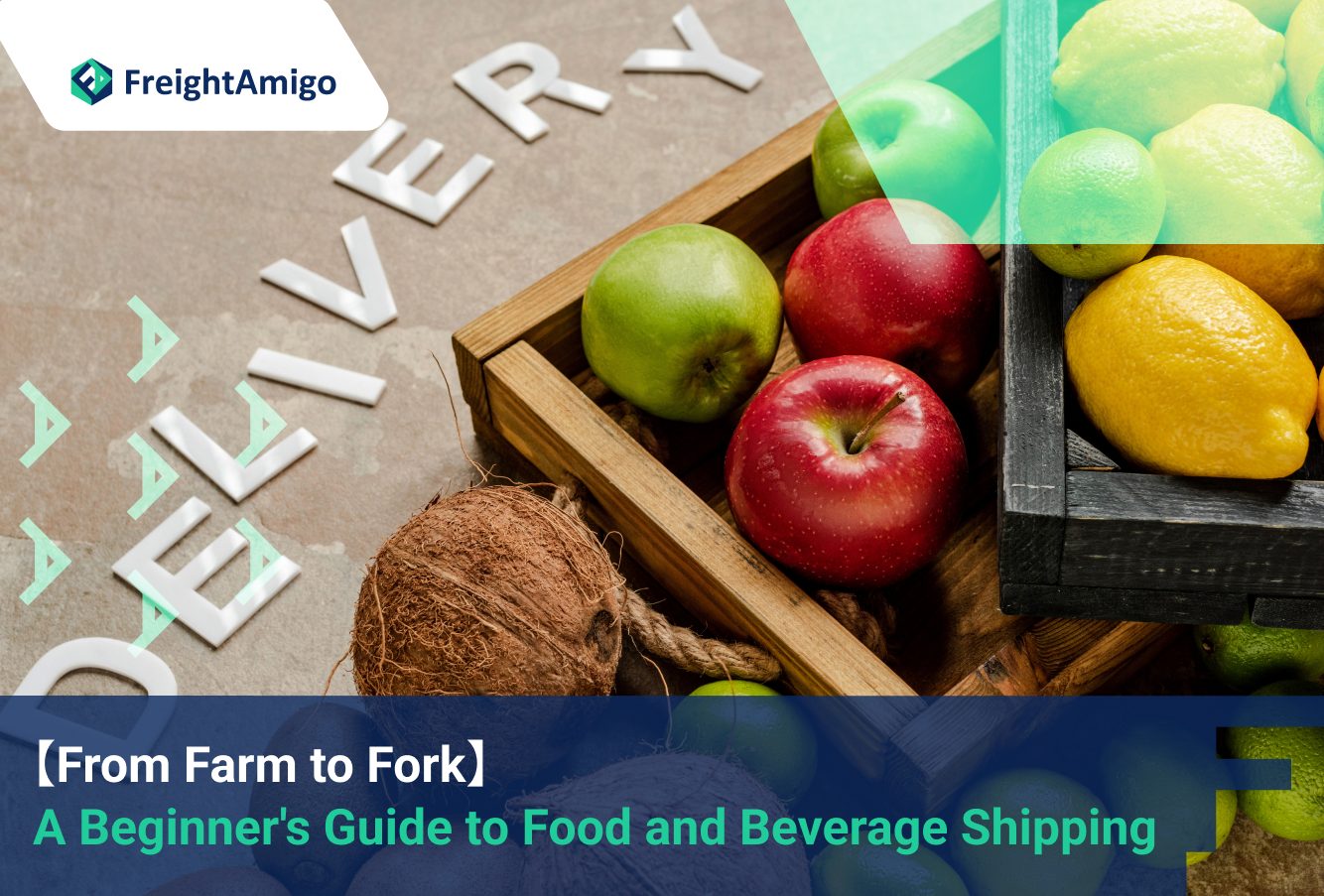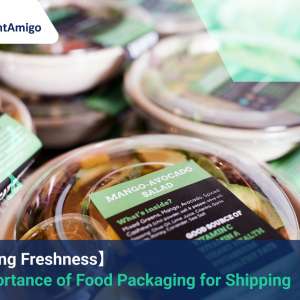Food and beverage shipping plays a crucial role in ensuring that the products we enjoy reach our tables in a safe and timely manner. Whether it’s a juicy apple from the orchard or a refreshing bottle of soda, the journey these items take from the farm to our fork involves a complex network of transportation and logistics. In this beginner’s guide, we will explore the different types of food commonly shipped, the various modes of transportation used, and the importance of proper shipping for food and beverage products.
Latest update on 5 February, 2024 by Aiden Ng– Marketing Analyst at FreightAmigo
Want to compare the best Express, Air Freight, Sea Freight, Rail Freight & Trucking rates so as to have better control on cost?
Types of Food That Are Commonly Being Shipped
When it comes to food and beverage shipping, a wide variety of products are transported across the globe. From fresh produce and dairy products to packaged snacks and frozen goods, the range of items being shipped is diverse and expansive. Fresh fruits and vegetables, such as apples, oranges, and lettuce, are often shipped to different regions to meet the demand for seasonal produce. Dairy products, including milk, cheese, and yogurt, are also commonly shipped to ensure a steady supply for consumers. Additionally, packaged snacks like potato chips, chocolate bars, and cookies find their way onto store shelves through shipping processes.
Different Modes of Transportation for Food and Beverage Products
Food and beverage products can be transported using different modes of transportation, depending on the distance and specific requirements of the items being shipped. One of the most common methods is road transportation, where trucks are used to transport goods from farms or manufacturing facilities to distribution centers or retail stores. This mode of transportation is particularly suitable for short distances and allows for flexibility in terms of delivery schedules.
For longer distances or international shipments, air freight becomes a popular choice. Airplanes offer a fast and efficient way to transport perishable goods, ensuring that they reach their destination quickly. This mode of transportation is especially crucial for food items with a limited shelf life, such as seafood and fresh produce. Another mode of transport is rail, which is often utilized for bulk shipments of food and beverage products, such as grains, sugar, and beverages.
Importance of Proper Shipping for Food and Beverage Products
Proper shipping practices are essential for maintaining the quality and safety of food and beverage products. Temperature control is one of the critical factors to consider during shipping. Many food items are perishable and require specific temperature ranges to prevent spoilage and maintain freshness. For example, fresh meat and seafood must be kept at low temperatures to prevent bacterial growth, while some fruits and vegetables require controlled humidity levels to preserve their texture and flavor.
In addition to temperature control, proper packaging is crucial for protecting food and beverage products during transit. Packaging materials should be chosen based on the specific requirements of the items being shipped, ensuring that they are adequately insulated and protected from external factors. This includes using appropriate containers, padding, and insulation materials to prevent damage and contamination.
Challenges in Food and Beverage Shipping
Although food and beverage shipping is an integral part of the industry, it is not without its challenges. One major challenge is maintaining the cold chain, especially for perishable goods. The cold chain refers to the uninterrupted temperature-controlled supply chain, from production to consumption. Any break in the cold chain can lead to spoilage and compromise the safety and quality of the products. Therefore, maintaining a consistent temperature throughout the shipping process is critical.
Another challenge is navigating the complex web of regulations and certifications related to food safety and international trade. Different countries may have varying requirements and standards for food and beverage imports, including labeling, documentation, and certification of compliance. It is essential for shippers to stay informed and ensure compliance with these regulations to avoid delays or rejection of their products at customs.
Steps to Ship Perishables
Shipping perishable goods requires careful planning and execution to ensure that the products arrive in optimal condition. Here are a few steps to consider when shipping perishables:
- Proper packaging: Use insulated containers or packaging materials that can maintain the desired temperature range for the specific perishable product.
- Temperature monitoring: Install temperature monitoring devices in the shipping containers to track and record temperature changes throughout the journey.
- Choosing the right transportation mode: Select a transportation mode that can maintain the required temperature conditions, such as refrigerated trucks or air cargo with temperature-controlled compartments.
- Efficient logistics: Plan the shipping route and schedule carefully to minimize transit time and reduce the risk of temperature fluctuations.
- Communication and coordination: Maintain clear communication with all parties involved, including suppliers, carriers, and recipients, to ensure smooth coordination and timely delivery.
Conclusion
Food and beverage shipping is a complex and vital aspect of the industry, ensuring that the products we enjoy reach our tables in a safe and timely manner. Understanding the different types of food commonly shipped, the various modes of transportation used, and the importance of proper shipping practices is essential for anyone involved in the food and beverage supply chain. By following best practices, such as maintaining temperature control and ensuring proper packaging, we can ensure that our favorite foods and beverages continue to be available and enjoyable for all.
There are different options for cargo transportation. If you want to choose the most convenient and suitable solution, it is best to have the full support of logistics experts! If you are planning to ship goods overseas, please go to the FreightAmigo page for inquiries.
Read More:
How to Ship Food Safely and Efficiently
【Delivering Freshness】 The Importance of Food Packaging for Shipping
【The Evolution of Cold Chain Technologies】 Ensuring Optimal Temperature Control in Shipping
【Perfect Food Shipping Company】Choosing the Right Partner for Your Delicious Products
If you have any inquiries on logistics/supply chain, feel free to contact FreightAmigo now:
Chat with us online | Hotline: +852 28121686 | WhatsApp: +852 27467829









































